Accountability and Information 1
Final Project Essentials: Fixed Effects
Logistics
Assignments
- Today
- Jablonski and Seim (2023)
- Questions about Data Assignment 1
- Thursday (3/28)
- Data Assignment 1 Due
- Dunning et al. (2019)
Agenda
- Jablonski and Seim (2023)
- Data Assignment 1 Questions
- Final Project Essentials: Fixed Effects
Jablonski and Seim (2023)
Models of political accountability
What is political accountability?
- Accountability is meant to produce responsiveness
- Responsiveness means that a government “adopts policies that are signaled as preferred by citizens” (Manin, 1999)
- If governments fail to adopt citizens’ preferred policies, they will be sanctioned
Assumptions
- Politicians have information about what citizens want
- Citizens have information about which policies a politician is responsible for
Models of political accountability
Accountability requires that Voters:
- Observe credible signal of performance
- Attribution
- Benchmarking
- Update their beliefs
- Have credible alternatives
Models of political accountability
Accountability requires that politicians:
- Seek to maintain office
- Observe citizen preferences
- Update their beliefs
Models of political accountability
Distributional politics
- Target public spending to maximize electoral advantage
Responsiveness
- Maximizing welfare across constituents
Decentalization
- Both sides have better information at a more local level
Background
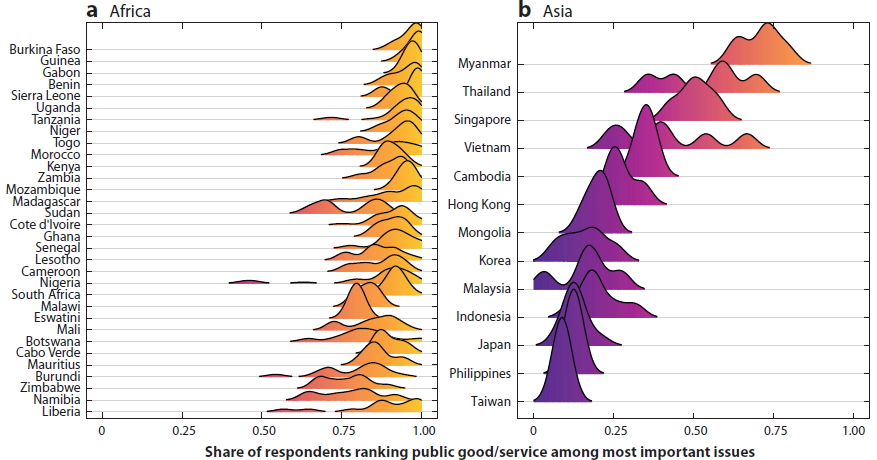
Background
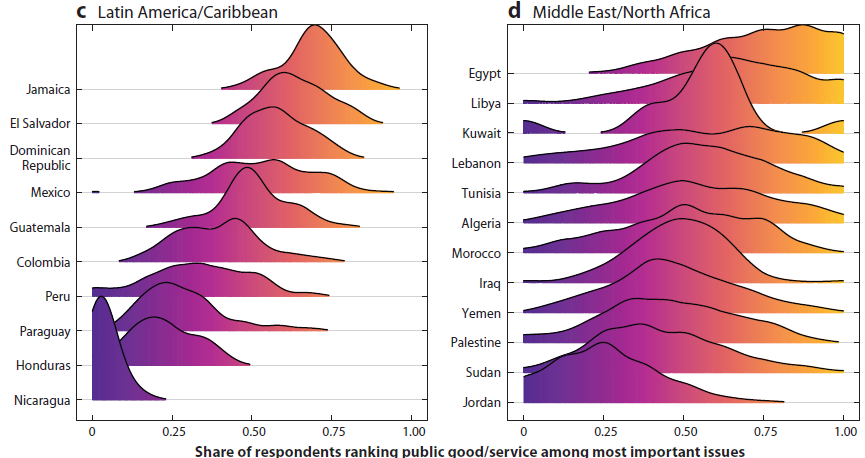
Theory
- Politicians aim to allocate to the community with the highest return on votes
- This means that allocation is conditional on information about citizen preferences across eligible communities
Citizen utility: \(x_i = c_i(a) - p_i - d_i\)
- \(c_i(a)\): Utility from investment \(a\)
- \(p_i\): Utility of voting for a challenger
- \(d_i\): Cost of voting
Theory
Politician utility:
\[ v_j(a) = \sum_{i=1}^{N} 1(x_i > 0, p_i + d_i \geq 0) \] To allocate on electoral rewards, they need to know:
- \(c_i(a)\): Utility from investment \(a\)
- \(p_i\): Utility of voting for a challenger
- \(d_i\): Cost of voting
- \(n\): The number of individuals
Theory
Gathering information is costly
- Time
- Coordination
- Varies across constituencies (geography, social proximity)
Alternatives
- Rely on heuristics
- Collect information from more accessible places
Theory
By providing information to politicians, we can see how the lack of information affects allocation decisions
Research Design
Information about schools
- Need: Class size, teacher housing, etc.
- Target communities with high consumption utilities (\(c_i(a)\))
- Aid: Existing aid projects at each school
- Marginal returns to overlapping investments
- Voting: Vote share at nearest polling station
- Update on \(\bar{p_j}\)
- \(d\) determines whether to mobilize swing or base
Research Design
Outcome
- Allocation of NGO supplies
Heterogeneous effects
- Transparency
- Information costs
Research Design
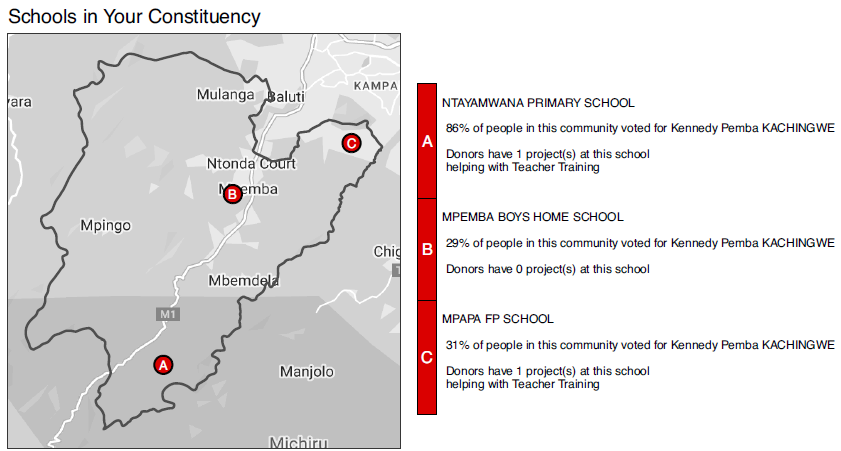
Research Design
Questions
- What do they mean by ‘factorial assignment’?
- Each respondent has 1-3 pieces of information
- In the estimation, how are they using interaction terms?
- Estimate the impact of information based on provision
- Estimate heterogeneous effects based on information costs and transparency
\[ P(Y_{nsi} = 1) = \phi(\beta_1z_i + \beta_2t_sz_i + \gamma X_is + e_{nsi}) \]
Description of Information
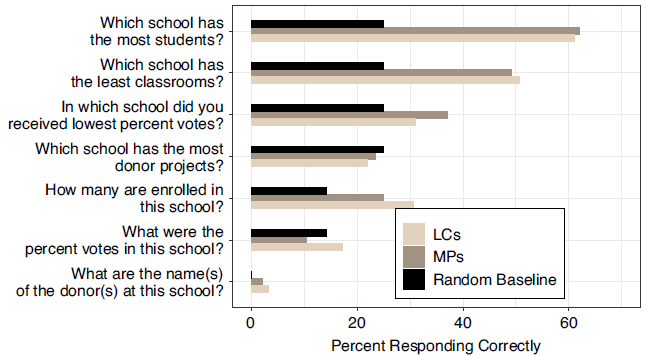
Findings
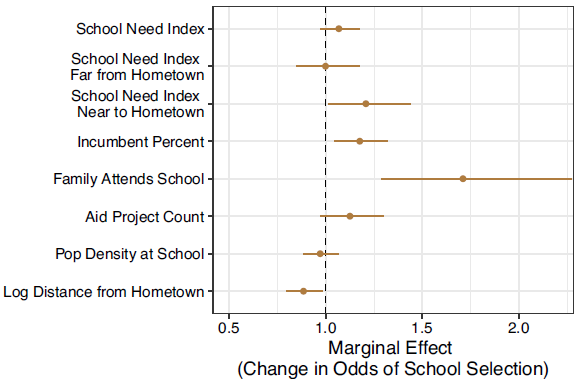
- Why aren’t these estimates causally identified?
Findings
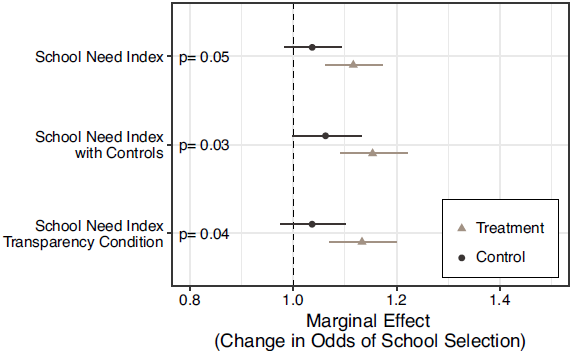
Findings

Findings
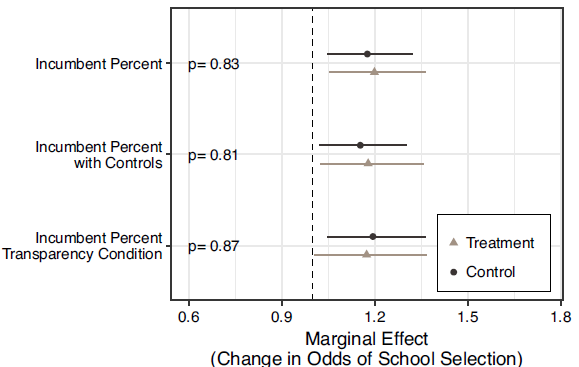
Findings

Policy Implications
- Information gaps may explain disparities in public spending
- Information can reduce disparities